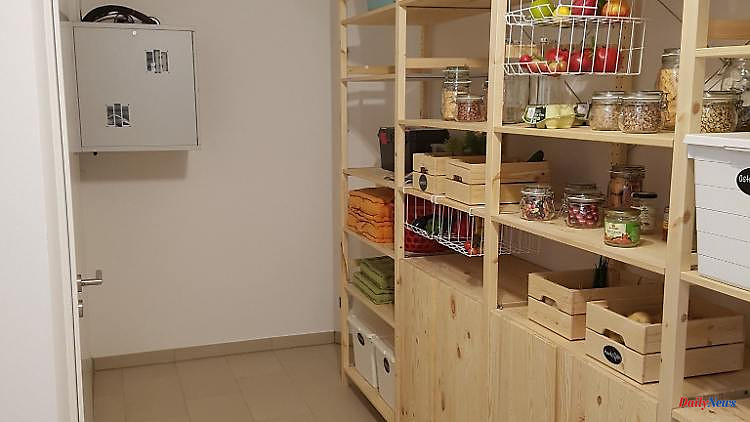Sometimes it's just about one more room that you would like to have in your house. As storage or to house the heater or a laundry room. Modular cellars can do that - and they reduce construction costs.
The construction costs increase by a good 20 percent with the decision for a basement - a sum that some builders have to or want to save. But doing without also has disadvantages: heating or laundry room, which are usually housed in the basement, then have to be located in the living area. But there is a compromise: a modular cellar, a mini cellar, a technology box or an effective cellar - small, compact concrete boxes under the house.
"They are an idea for builders who would actually opt for a floor slab for cost reasons, but see that a basement has its advantages, no matter how small it is," says Dirk Wetzel from the Finished Cellar Quality Association. "There, for example, the building services are in better hands than in the living area, because they often cause unpleasant background noise."
For such small cellars, the excavation pit does not have to be as large as for a complete basement. According to Dirk Wetzel, pits with an area of around 6.50 by 6.50 meters are sufficient. This saves costs for excavation and disposal of the soil, and you also need less material for backfilling and insulating and sealing the basement. "All in all, up to 50 percent of the costs can be saved in relation to a full basement," says Wetzel.
For comparison: Builders of a single-family house have to pay around 30,000 to 50,000 euros more for a basement than for the foundation on a floor slab with a frost barrier, according to Heinrich Bökamp, President of the North Rhine-Westphalia Chamber of Engineers. The Finished Cellar Quality Association assumes that the costs for a house with a basement are on average 20 percent higher than the costs for a house without a basement.
Since these small modular cellars are already largely industrially prefabricated, the assembly of a small cellar on the construction site usually takes no more than a day. "Then, like in a full basement, the concrete box is firmly connected to the floor slab at the top," explains Wetzel. An additional foundation for the reinforced concrete structure is usually not required.
These cellars can be built anywhere under the house, but practically the cellar staircase connects to the ground floor staircase. But: "The concrete box does not necessarily have to be sunk into the ground under the house," adds Ulrich Lotz. "You can bury them in any suitable place, for example under the terrace or in the garden. It is important that a proper and safe access is created."
This solution is also an option for builders who want to add a basement box later. "It can be retrofitted at any time. And the garden looks the same as it did before, once grass has grown over the spot," says Lotz.
But such modular or effective cellars are not without controversy. "If the building only partially has a basement, cracks can form and the area of the house that doesn't have a basement can even sink," says Heinrich Bökamp from the North Rhine-Westphalia Chamber of Engineers.
He advises opting for either a full basement or a floor slab. "Anyone who absolutely wants to save on the new building can wait to completely expand the basement rooms. But if you do without the basement, it can no longer be reversed later," says Bökamp.
A real basement is that it increases the value of the house and offers additional living quality. Modern basements are no longer the dark, damp rooms that were once used to store coal and potatoes. Today they are tight, bright and even thermally insulated. This opens up many possible uses: for living, as a gym, sauna, hobby or work room.
And especially those who need more living space can be better off with a real basement than with the extension of the building above ground. "In terms of living quality, one square meter in the basement currently costs around 600 to 800 euros," says Ulrich Lotz, managing director of the initiative per cellar. "In the upper living area you have to reckon with three to four times as much."
(This article was first published on Friday, June 10, 2022.)












